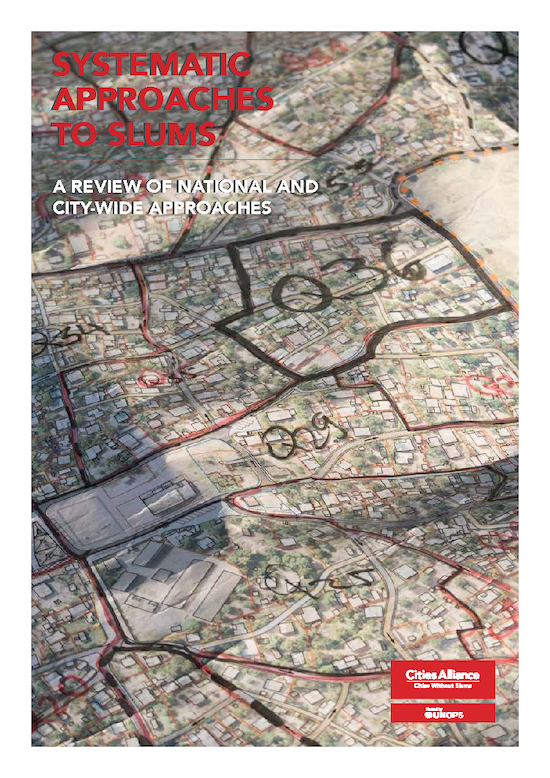- Who We Are
- How We Work
- Regional / Country Initiatives
- Legacy
- Core Themes
- Working Groups
- Portfolio & Results
- Newsroom
- Resources
Systematic Approaches to Slums: A Review of National and City-Wide Approaches


Early slum-upgrading projects tended to be confined to
improvement of housing and physical infrastructure. With time, slum upgrading has started to pay attention to community involvement, governance, legal status of the households’ title, and environmental safety.
Shah et al. 2015, p.9.
Starting in the early 1990s, more structural interventions have been advocated. Many challenges identified in slum upgrading programmes require government changes on a high legislative level. Such approaches take the form of city-wide or even national slum upgrading programmes. While differing in some important ways (such as geographic scale or range of possibilities), these two approaches have a systematic nature in the approach in common.
This review is part of the Global Review Series on Informality. It provides a selective overview of systematic approaches implemented in various countries around the world. While our knowledge of national frameworks is not consolidated enough to provide a comprehensive overview of constituting elements and success factors, the aim of the paper is to synthesize the current practice literature and lay the ground for more meaningful engagement and debates.
Main Messages
- Slum upgrading projects and sites and service projects were essential in recognizing the role and merits of informal urbanization processes. The interventions promoted and supported by international organizations showed their limitations quickly.
- National and city-wide slum upgrading programmes have been implemented around the world. Such interventions are systematic, as they are based on a holistic view of slums and their multiple levels of deprivation. These interventions are also strategic, as they are based on development phases, intervention tool kits, and practical and participatory coordination.
- Recurring elements in systematic approaches are a connection of slum upgrading to the national or city-level development strategy. Other elements are the larger policy framework, the embeddedness of slum upgrading into urban and housing strategy, clear and transparent parameters to classify slums and connect them to a set of interventions, and well-informed decision-making and management based on participatory data collection.
- Our current knowledge of strategic approaches to slums is not consolidated. Sporadic evidence points at essential elements and remaining challenges summarized in this review paper. Strategic approaches allow tackling underlying causes and consequences of slum formations, creating physical and functional connections on the project level, enabling strategic decision-making, and contributing to greater fairness.
- The remaining challenges recall the identified bottlenecks on the project level (land, finance, lack of human resources, or political will) and offer more possibilities to tackle them by activating all stakeholders and institutional scales available in a country or city.


